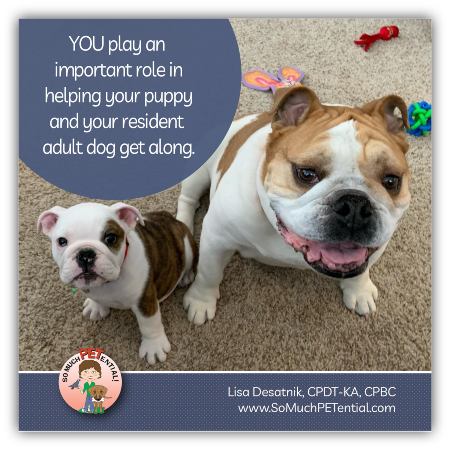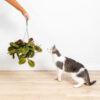Key Takeaways
Introduce puppies to other dogs gradually in a neutral location to reduce territorial behavior.
Use controlled leash meetings to ensure safety and monitor body language for positive signals.
Provide frequent breaks to prevent overstimulation and promote calm interactions.
Gradually increase interaction time as both dogs become more comfortable with each other.
Reinforce positive behavior with treats and praise to encourage good social skills.
The Importance of Puppy Socialization
Socializing your puppy is crucial for their development and well-being. Puppies that are well-socialized tend to be more confident, friendly, and less likely to develop behavioral problems. This process helps them learn how to interact appropriately with other dogs, which is essential for peaceful walks and enjoyable visits to the park.
Most importantly, early socialization can prevent fear and aggression issues later in life. A well-socialized puppy will grow into a well-adjusted adult dog, capable of handling various social situations with ease. Therefore, taking the time to introduce your puppy to other dogs properly is an investment in their future happiness and yours.
“Introducing A New Puppy To Your Adult Dog |” from somuchpetential.com and used with no modifications.
Risks of Improper Puppy Introduction
Improper introduction of your puppy to other dogs can lead to several issues. Puppies that have negative experiences may develop fear or aggression towards other dogs. This can make future interactions stressful and potentially dangerous.
Besides that, improper introductions can also result in injuries if the dogs do not get along. Therefore, it’s essential to follow a structured approach to ensure that both your puppy and the other dogs have positive experiences during their initial meetings. For example, choosing pet-safe evergreen shrubs for your yard can create a safe environment for these interactions.
Preparing for the Introduction
Before introducing your puppy to other dogs, preparation is key. You need to assess your puppy’s temperament, choose a neutral location, gather necessary supplies, and understand dog body language. These steps will help create a smooth and positive introduction process. For instance, you might consider introducing your puppy at a dog-friendly park to ensure a neutral and pleasant environment.
Assessing Your Puppy’s Temperament
Understanding your puppy’s temperament is the first step in preparing for introductions. Some puppies are naturally more social and curious, while others may be shy or fearful. Observing how your puppy reacts to new environments and people can give you insights into their personality.
If your puppy seems nervous or anxious, you might need to take things slower and provide extra reassurance. On the other hand, if your puppy is overly excited, you may need to work on calming techniques before introducing them to other dogs.
Choosing a Neutral Location
Choosing a neutral location for the initial meeting is crucial. Dogs can be territorial, and meeting in a neutral space can help reduce this behavior. Parks, quiet streets, or a friend’s yard can be good options. Avoid introducing your puppy to other dogs in your home or the other dog’s home initially.
A neutral location allows both dogs to feel more relaxed and less defensive. It sets the stage for a positive interaction and helps prevent territorial disputes.
Gathering Necessary Supplies
Having the right supplies on hand can make the introduction process smoother. Here are some essentials:
For more detailed guidance, you can refer to this comprehensive guide on introducing dogs.
Leashes: Ensure both dogs are on leashes for controlled introductions.
Treats: Use treats to reward calm and positive behavior.
Water: Keep water available to keep the dogs hydrated.
Calming aids: Consider using calming sprays or pheromone collars if your puppy is anxious.
Understanding Dog Body Language
Understanding dog body language is vital for monitoring interactions. Look for signs of relaxation, such as wagging tails, loose bodies, and play bows. Conversely, be aware of signs of stress or aggression, such as stiff bodies, growling, or baring teeth. For more information, check out this guide on how to introduce dogs to each other.
By recognizing these signals, you can intervene early if things start to go wrong. This ensures that the introduction remains positive and safe for both dogs.
Steps for the Initial Introduction
Now that you’re prepared, it’s time to start the introduction. Follow these steps to ensure a smooth and positive experience for both your puppy and the other dog.
Start with a controlled leash meeting.
Watch for positive signals.
Manage play and interaction carefully.
Provide frequent breaks and use calming techniques.
Controlled Leash Meeting
Begin with a controlled leash meeting. Keep both dogs on leashes and allow them to approach each other slowly. Avoid forcing them to interact if either dog seems hesitant. Give them time to sniff and observe each other from a distance.
If both dogs appear relaxed, gradually allow them to get closer. Keep the leashes loose to avoid creating tension but be ready to intervene if necessary. For more detailed guidance, you can refer to how to introduce dogs to each other.
Watching for Positive Signals
As the dogs interact, watch for positive signals. These include wagging tails, play bows, and relaxed body language. If both dogs are showing these signs, it’s a good indication that they are comfortable with each other.
However, if you notice signs of stress or aggression, such as growling, stiff bodies, or raised hackles, separate the dogs and give them a break. It’s essential to keep the interactions positive to build a strong foundation for future encounters.
Managing Play and Interaction
Once the dogs seem comfortable with each other, you can allow them to play. Keep the play sessions short and supervised to prevent overstimulation. Monitor their behavior closely and intervene if things start to get too rough.
Encourage gentle play and use positive reinforcement to reward good behavior. If either dog becomes too excited or aggressive, separate them and give them a break to calm down.
Once the dogs seem comfortable with each other, you can allow them to play. Keep the play sessions short and supervised to prevent overstimulation. Monitor their behavior closely and intervene if things start to get too rough.
Encourage gentle play and use positive reinforcement to reward good behavior. If either dog becomes too excited or aggressive, separate them and give them a break to calm down. For more tips on safe play, check out these non-aggressive play techniques.
Frequent Breaks and Calming Techniques
It’s essential to provide frequent breaks during the initial introductions. Puppies, in particular, can become overstimulated quickly, which may lead to negative interactions. Short, positive interactions are more beneficial than prolonged, stressful ones.
Use calming techniques such as gentle petting, speaking in a soothing voice, or offering a favorite toy. This helps both dogs relax and associate the experience with positive feelings, making trips to places like Riverfront Regional Park more enjoyable.
Taking the Next Steps
Introducing the Puppy to the Home Environment
Once the initial introductions have gone well, you can start introducing the puppy to your home environment. Begin by allowing the dogs to explore the house separately. This gives each dog a chance to become familiar with the new scents and spaces without feeling threatened.
Gradually allow them to interact in different areas of the house, always under supervision. This helps the dogs understand that they share the space and can coexist peacefully.
Gradual Increase in Interaction Time
As both dogs become more comfortable with each other, you can gradually increase the amount of time they spend together. Start with short interactions and slowly extend the duration as they continue to show positive behavior.
Monitor their interactions closely and be ready to intervene if necessary. The goal is to build a strong, positive relationship between the dogs, which takes time and patience.
Signs It’s Time for Unsupervised Visits
Once the dogs have consistently shown positive interactions and are comfortable with each other, you can consider allowing unsupervised visits. Look for signs such as relaxed body language, mutual play, and shared resting spaces.
However, continue to monitor their behavior periodically to ensure that their relationship remains positive. If any issues arise, go back to supervised interactions and address the problem areas.
Going for Walks Together
Walking on Leashes without Tension
Walking both dogs together is an excellent way to reinforce their bond and provide exercise. Start by walking them on leashes, ensuring there is no tension. Keep a loose leash to allow the dogs to move freely and comfortably.
If either dog starts to pull or show signs of stress, stop and give them a moment to calm down. Use treats and praise to reward calm walking behavior.
Choosing the Right Walking Route
Choose a walking route that is quiet and free from distractions. This helps the dogs focus on each other and the walk itself. Avoid busy streets or areas with many other dogs until both dogs are more comfortable walking together.
Gradually introduce more challenging environments as the dogs become more confident and comfortable with each other.
Avoiding High-Stress Scenarios
During the initial walks, avoid high-stress scenarios such as crowded parks or areas with aggressive dogs. These situations can overwhelm the dogs and lead to negative experiences.
Focus on creating positive, low-stress walking experiences to build the dogs’ confidence and reinforce their bond.
Visiting Dog Parks and Public Spaces
Once your dogs are comfortable walking together, you can start introducing them to dog parks and public spaces. These environments provide opportunities for socialization and play with other dogs.
Evaluate your puppy’s behavior in public.
Choose appropriate playmates.
Handle overexcited or aggressive behavior.
Evaluating Your Puppy’s Behavior in Public
Before visiting a dog park, evaluate your puppy’s behavior in public. Observe how they react to new environments, people, and other dogs. If your puppy shows signs of stress or fear, take things slow and provide reassurance. For a stress-free outing, consider visiting Riverfront Regional Park for a calm environment.
It’s important to ensure that your puppy is comfortable and confident in public spaces before introducing them to a dog park.
Choosing Appropriate Playmates
At the dog park, choose appropriate playmates for your puppy. Look for dogs that have similar play styles and energy levels. Avoid overly aggressive or dominant dogs, as they can intimidate your puppy and lead to negative experiences.
Supervise the interactions closely and intervene if necessary to ensure that the play remains positive and safe.
Handling Overexcited or Aggressive Behavior
If your puppy becomes overexcited or shows signs of aggression, intervene immediately. Separate the dogs and give them a break to calm down. Use calming techniques and positive reinforcement to help your puppy relax.
Address any aggressive behavior promptly to prevent it from becoming a habit. If necessary, seek the help of a professional trainer to address any ongoing issues.
Reinforcing Positive Behavior
Reinforcing positive behavior is essential for successful socialization. Use rewards and praise to encourage good behavior and create positive associations with interactions.
Role of Rewards and Praise
Rewards and praise play a crucial role in reinforcing positive behavior. Use treats, toys, and verbal praise to reward your puppy for calm and friendly interactions. This helps them understand what behavior is expected and encourages them to repeat it.
Be consistent with your rewards and praise to reinforce the desired behavior effectively when introducing your puppy to the park.
Continued Exposure and Socialization
Continued exposure and socialization are essential for maintaining positive behavior. Regularly introduce your puppy to new environments, people, and dogs to keep their social skills sharp.
Gradually increase the level of difficulty and variety in their socialization experiences to build their confidence and adaptability. For instance, you can take them to different locations such as Washington Park to expose them to new environments.
Monitoring Long-term Progress
Monitor your puppy’s long-term progress to ensure that their socialization remains positive. Keep an eye on their behavior and address any issues promptly. Regularly assess their interactions and make adjustments as needed to maintain positive experiences, such as visiting Riverfront Regional Park for new socialization opportunities.
By staying proactive and attentive, you can help your puppy develop into a well-socialized and confident adult dog. For more tips, check out this guide on introducing dogs to each other.
Handling Setbacks and Challenges
Identifying Problematic Signs
Despite your best efforts, there may be times when your puppy encounters setbacks or challenges during socialization. Identifying problematic signs early can help you address them before they become ingrained behaviors.
Look for signs such as excessive fear, aggression, or avoidance behaviors. If your puppy consistently shows these signs, it may be time to adjust your socialization techniques or seek professional help.
When to Consult a Professional Trainer
There are times when consulting a professional trainer is necessary. If your puppy shows persistent aggression, fear, or other problematic behaviors, a professional can provide guidance and support.
Trainers with experience in dog-to-dog interactions can offer tailored strategies to address specific issues and help your puppy develop positive social skills.
Adjusting Socialization Techniques
If you encounter challenges, it may be necessary to adjust your socialization techniques. Here are some strategies to consider:
Take things slower: Give your puppy more time to adjust to new experiences.
Use calming aids: Consider using calming sprays, pheromone collars, or anxiety wraps.
Increase positive reinforcement: Reward calm and friendly behavior more frequently.
Provide more breaks: Allow for shorter, more frequent interactions to prevent overstimulation.
Adjusting your approach can help address specific challenges and ensure that your puppy continues to develop positive social skills. For more information, check out this guide on how to introduce dogs to each other.
Frequently Asked Questions (FAQ)
How long does it take for a puppy to get comfortable with other dogs?
The time it takes for a puppy to get comfortable with other dogs varies depending on the individual puppy and their experiences. Some puppies may become comfortable within a few days, while others may take several weeks or even months. Patience and consistent positive reinforcement are key to helping your puppy build confidence and social skills.
What can I do if my puppy seems afraid of other dogs?
If your puppy seems afraid of other dogs, take things slow and provide reassurance. Start with short, positive interactions and gradually increase the exposure. Use treats and praise to reward calm behavior and help your puppy associate other dogs with positive experiences. If fear persists, consider seeking the help of a professional trainer.
Should I let my puppy interact with all dogs at the park?
Not all dogs at the park may be suitable playmates for your puppy. Choose dogs with similar play styles and energy levels. Avoid overly aggressive or dominant dogs, as they can intimidate your puppy and lead to negative experiences. Supervise interactions closely to ensure they remain positive and safe.
Introducing a new puppy to other dogs can be a daunting task, but with the right approach, it can be a smooth and enjoyable experience. Start by choosing a neutral location for the first meeting to avoid territorial behavior. Keep both dogs on a leash and allow them to sniff each other while maintaining a calm demeanor. Gradually increase the duration of their interactions and reward positive behavior with treats and praise. Consistency and patience are key to ensuring a successful introduction. For more detailed guidance, you can refer to Cesar’s tips on introducing dogs.






